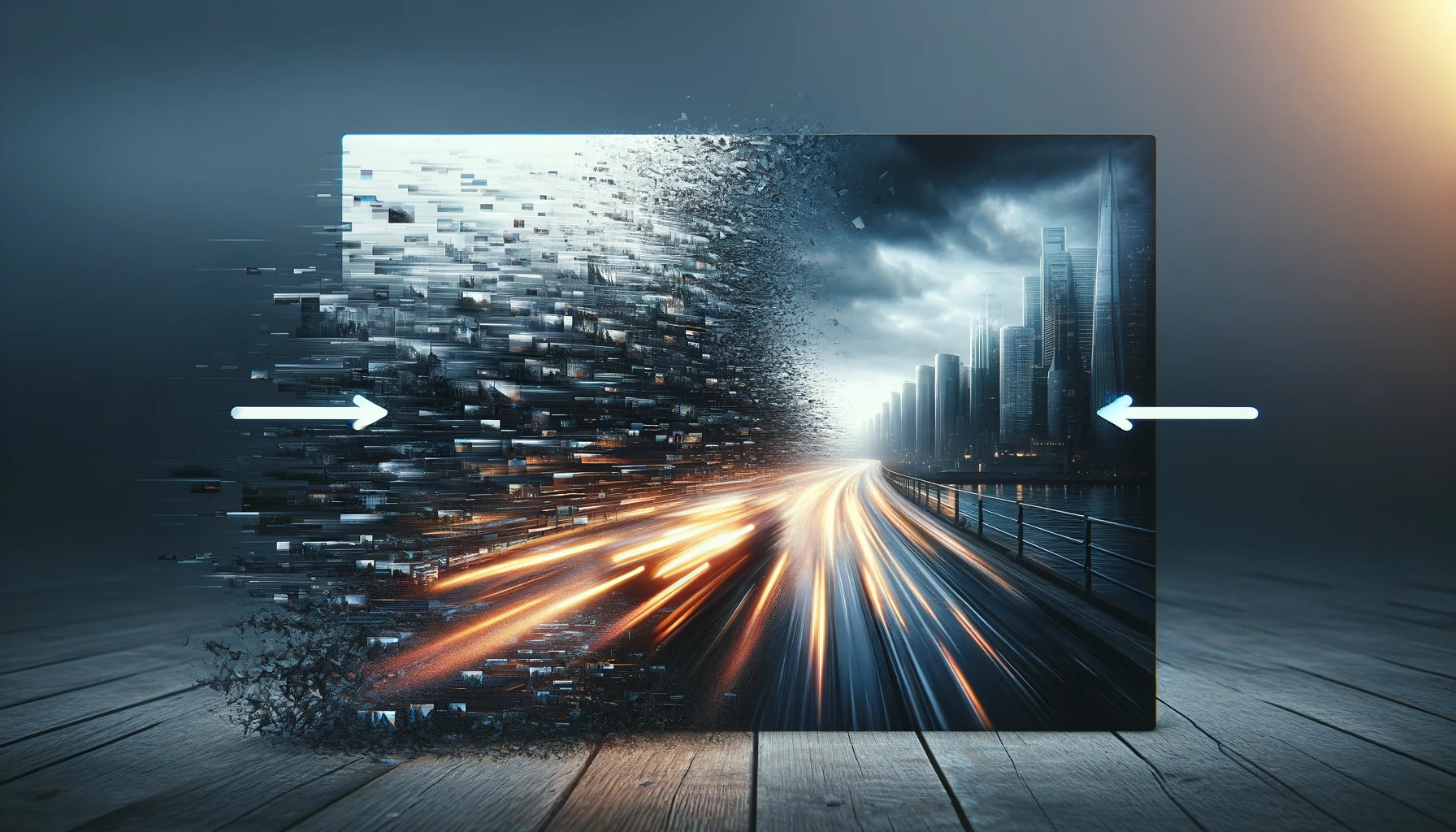Reducing Noise in Upscaled Images: Techniques and Tools
By Harvey
Published March 6, 2024
 Reducing Noise in Upscaled Images: Techniques and Tools
Reducing Noise in Upscaled Images: Techniques and Tools
In the digital age, the quest for clarity and detail in imagery is unending. As visual content becomes increasingly central to communication, the ability to enhance photo quality by upscale image processing has gained paramount importance. This process, however, is not without its challenges. Noise - the random variation of brightness or color information in images - often becomes more noticeable and detrimental to image quality when we attempt to enhance resolution with upscaling. This article delves into effective techniques and tools designed to reduce noise in upscaled images, ensuring that the pursuit of sharpness does not compromise the integrity of our visuals.
Understanding the Challenge
Before diving into solutions, it's crucial to grasp why noise amplification occurs during upscaling. Upscaling, by its nature, involves interpolating additional pixels into an image based on existing pixel values. While this process can upscale images to improve sharpness, it also magnifies any present noise, making it a more visible problem. Additionally, the process of blurry image detail restoration can inadvertently introduce artificial noise, further complicating the issue.
Techniques to Reduce Noise in Upscaled Images
Reducing noise in upscaled images requires a multifaceted approach, combining preprocessing strategies, advanced upscaling algorithms, and post-processing adjustments. Here are key techniques that professionals and enthusiasts alike can employ:
- Preprocessing Noise Reduction: The first line of defense against noise is addressing it before the upscaling process begins. Tools like noise reduction software or filters can be applied to the original image, targeting and minimizing noise while preserving as much detail as possible.
- Choosing the Right Upscaling Method: Not all upscaling techniques are created equal. Some, like AI-based upscaling algorithms, are specifically designed to enhance photo quality by upscale image methods while mitigating noise. These algorithms can analyze the content of an image and intelligently fill in details, often with built-in noise reduction capabilities.
- Post-Upscaling Noise Reduction: After an image has been upscaled, additional noise reduction can be applied. This step involves fine-tuning, as excessive noise reduction post-upscaling can lead to a loss of the very details the upscaling process aims to enhance.
- Edge Preservation: An essential aspect of reducing noise without losing detail is edge preservation. Techniques such as edge detection algorithms can help differentiate between noise and important details, allowing for more targeted noise reduction that spares vital image features.
- Frequency Separation: This advanced technique involves separating an image into its high-frequency (detail) and low-frequency (color, tone) components. Noise can then be reduced in the high-frequency layer without affecting the overall color and tone of the image, allowing for effective noise reduction that maintains the image's integrity.
Tools for Reducing Noise in Upscaled Images
Equipped with the right techniques, the selection of appropriate tools is your next step. The market offers a plethora of options, each with its strengths and tailored applications:
- AI Upscaling Software: Tools like Topaz Gigapixel AI and Adobe Photoshop's Super Resolution feature utilize artificial intelligence to upscale images while minimizing noise. They're particularly adept at maintaining clarity and detail, making them ideal for both professional photographers and graphic designers.
- Dedicated Noise Reduction Software: Software solutions such as Neat Image or DxO PureRAW specialize in reducing digital noise. They can be used in both the preprocessing and post-processing stages to clean up images without compromising detail.
- Image Editing Suites: Comprehensive image editing software like Adobe Photoshop and Affinity Photo offer a range of tools for both upscaling and noise reduction. Their advantage lies in the ability to manually fine-tune the balance between noise reduction and detail preservation, though they require a steeper learning curve.
- Online Upscaling Services: For those seeking quick fixes without the need for software installation, online upscaling services like Let’s Enhance or Deep Image offer AI-powered upscaling with noise reduction. While they provide convenience and accessibility, the level of control over the final output may be limited compared to dedicated software.
Best Practices for Optimal Results
Achieving the best possible outcome when reducing noise in upscaled images involves more than just selecting the right tools; it requires a thoughtful approach:
- Assess the Original Image: Evaluate the level and type of noise in your original image. Tailoring your noise reduction technique to the specific challenges of your image will lead to better results.
- Balance is Key: Strive for a balance between noise reduction and detail preservation. Over-zealous noise reduction can lead to overly smooth, unnatural-looking images.
- Iterative Approach: Consider applying noise reduction in stages, assessing the image after each step. This incremental process allows for more precise control over the final image quality.
- Stay Updated: The field of image processing is rapidly evolving, with new tools and techniques continually emerging. Staying informed about the latest developments can help you leverage the most effective solutions available.
Conclusion
The ability to upscale images without succumbing to the pitfalls of increased noise is a delicate art, blending science with creativity. By understanding the inherent challenges, employing strategic techniques, and utilizing the right tools, you can upscale images that retain their beauty, clarity, and detail. Whether you're a professional looking to perfect your portfolio or an enthusiast aiming to bring old memories to life, mastering the art of noise reduction in upscaled images is a skill of inestimable value in the digital era.